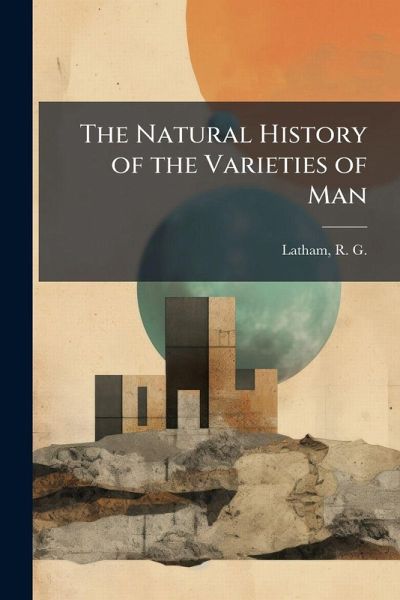
The Natural History of the Varieties of Man
Versandkostenfrei!
Versandfertig in über 4 Wochen
28,99 €
inkl. MwSt.

PAYBACK Punkte
14 °P sammeln!
The Natural History of the Varieties of Man, by R.G. Latham, published in 1850, offers a detailed exploration of human racial classifications through the lens of 19th-century scientific thought. This comprehensive work delves into the physical and cultural characteristics used to differentiate human populations, providing insights into the methodologies and perspectives prevalent during a period of significant scientific inquiry into human diversity. Latham's systematic approach examines various ethnic groups and their distributions, contributing to the broader field of ethnology. While reflec...
The Natural History of the Varieties of Man, by R.G. Latham, published in 1850, offers a detailed exploration of human racial classifications through the lens of 19th-century scientific thought. This comprehensive work delves into the physical and cultural characteristics used to differentiate human populations, providing insights into the methodologies and perspectives prevalent during a period of significant scientific inquiry into human diversity. Latham's systematic approach examines various ethnic groups and their distributions, contributing to the broader field of ethnology. While reflecting the biases and limitations of its time, this book remains a valuable historical document for understanding the development of anthropological science and the complex history of racial studies. It provides essential context for modern discussions on race, diversity, and the evolution of scientific thought. This work has been selected by scholars as being culturally important, and is part of the knowledge base of civilization as we know it. This work was reproduced from the original artifact, and remains as true to the original work as possible. Therefore, you will see the original copyright references, library stamps (as most of these works have been housed in our most important libraries around the world), and other notations in the work. This work is in the public domain in the United States of America, and possibly other nations. Within the United States, you may freely copy and distribute this work, as no entity (individual or corporate) has a copyright on the body of the work. As a reproduction of a historical artifact, this work may contain missing or blurred pages, poor pictures, errant marks, etc. Scholars believe, and we concur, that this work is important enough to be preserved, reproduced, and made generally available to the public. We appreciate your support of the preservation process, and thank you for being an important part of keeping this knowledge alive and relevant.












